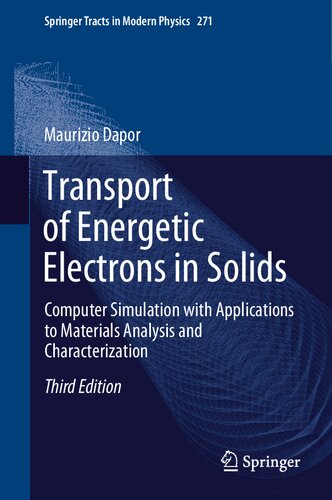

Most ebook files are in PDF format, so you can easily read them using various software such as Foxit Reader or directly on the Google Chrome browser.
Some ebook files are released by publishers in other formats such as .awz, .mobi, .epub, .fb2, etc. You may need to install specific software to read these formats on mobile/PC, such as Calibre.
Please read the tutorial at this link: https://ebookbell.com/faq
We offer FREE conversion to the popular formats you request; however, this may take some time. Therefore, right after payment, please email us, and we will try to provide the service as quickly as possible.
For some exceptional file formats or broken links (if any), please refrain from opening any disputes. Instead, email us first, and we will try to assist within a maximum of 6 hours.
EbookBell Team

4.8
14 reviewsThis book describes, as simply as possible, the mechanisms of scattering (both elastic and inelastic) of electrons with solid targets (electronatom, electronplasmon, and electronphonon interactions). It also presents the main strategies of the Monte Carlo method, as well as numerous comparisons between simulation results and the experimental data available in the literature. Furthermore it provides readers with all the information they need in order to write their own Monte Carlo code and to compare the obtained results with the many numerical and experimental examples presented throughout the book.
An extended and updated third edition of a work published in 2014 (first edition) and in 2017 (second edition) on the application of the Monte Carlo method to the transport of fast electrons in solids, this book includes, as novel topics, the theory of polarized electron beams (i.e. density matrix and spin polarization), the study of elastic scattering by molecules, a classical treatment of the Bethe-Bloch stopping power, a simple derivation of the f- and ps-sum rules, the Vicanek and Urbassek formula for the calculation of the backscattering coefficient, the Wolff theory describing the secondary electron spectra, and fundamental aspects of the interactions between electrons beams and solid targets. Further, it describes a completely analytical approach (the so-called multiple reflection method) for calculating the absorbed, backscattered, and transmitted fractions of electrons from unsupported and supported thin films. It also discusses recent applications of the Monte Carlo method.